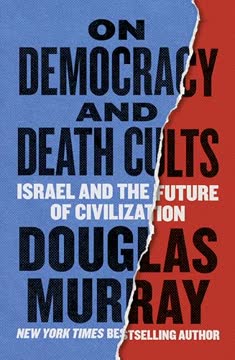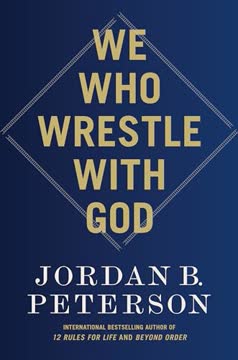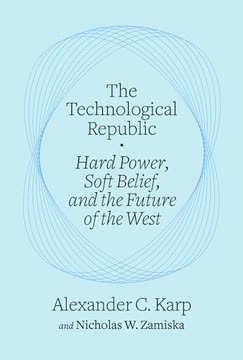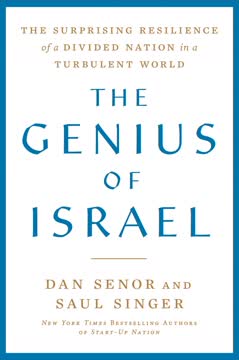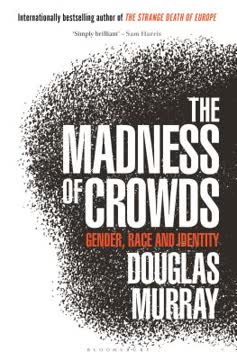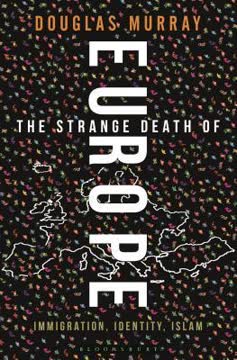Key Takeaways
1. The Shocking Scale and Brutality of the October 7th Massacre
To put it in perspective, the death toll on October 7 was the equivalent of some 44,400 Americans being killed by terrorists on a single day.
A surprise attack. On the morning of October 7, 2023, Hamas launched a massive, coordinated assault on southern Israel, breaching the border by land, sea, and air. Air-raid sirens sounded across the country, signaling an unprecedented event far beyond the usual rocket fire. This surprise attack occurred on the Jewish Sabbath and the festival of Simchat Torah, catching many off guard.
Unimaginable horror. Reports quickly emerged of hundreds, then thousands, of terrorists streaming into communities and a music festival. The scale of the slaughter became apparent over weeks, with the final death toll reaching nearly 1,200 people, overwhelmingly civilians. The attack included horrific acts:
- Mass shootings (364 killed at the Nova festival)
- Burning people alive in their homes
- Beheadings and mutilation
- Widespread sexual violence against men and women
- Kidnapping of approximately 250 people of all ages
A national trauma. For a country of 9 million, the impact was devastating, equivalent to multiple 9/11s in the US. The brutality was often filmed and broadcast by the terrorists themselves, adding another layer of horror. This massacre, the largest killing of Jews since the Holocaust, plunged Israel into deep trauma.
2. Hamas: A Death Cult That Celebrates Atrocity
“Look how many I killed with my own hands! Your son killed Jews!”
Relish in violence. Unlike the Nazis who attempted to hide their worst crimes, the Hamas terrorists on October 7 performed their atrocities with visible glee and pride, often recording and broadcasting their actions. This demonstrated an intense joy in killing, particularly Jews. One terrorist's phone call home exemplified this:
- He boasted to his father and mother about killing ten Jews with his own hands.
- His parents responded with blessings and pride, wishing they were with him.
- He insisted there was "no going back," only "death or victory."
A distinct evil. This open celebration of murder, even among family, marked a departure from historical patterns of evil, where perpetrators often sought to conceal their deeds. It revealed a "cult of death" ideology where violence and killing were not just means to an end but sources of exultation.
Beyond political aims. The motivation appeared deeply religious and ideological, not merely political. This fanatical commitment to violence, even boasting about strangling victims with bare hands as a religious duty (as Yahya Sinwar reportedly did), made them distinct and particularly dangerous.
3. The World's Upside-Down Reaction: Celebrating Attackers, Condemning Victims
But it was not a protest against the horrors of the previous day. It was not a protest against the terrorists of Hamas. It was instead a protest against the State of Israel and the citizens of the world’s only Jewish state.
Immediate anti-Israel protests. Within hours and days of the massacre, while fighting was still ongoing in Israel, protests erupted in Western cities not against Hamas, but against Israel. Rallies in Times Square, London, Paris, and elsewhere celebrated the attacks. Signs and chants included:
- "Long Live Intifada" and "Jihad, jihad, jihad!"
- "Resistance Is Justified" and "By Any Means Necessary"
- "From the River to the Sea" (a call for Israel's elimination)
- Open praise for Hamas and their actions
Lack of condemnation for Hamas. Strikingly, there was not a single major protest against Hamas in any Western city. The perpetrators of the massacre faced no criticism on the streets, despite Western governments having funded Palestinian entities for years, money Hamas diverted for terror infrastructure.
Denial and dehumanization. As news of the atrocities, including mass rape, emerged, a wave of denial swept parts of the world. Hostage posters were torn down in cities globally, suggesting a refusal to acknowledge the victims' plight. Some even suggested the Nova partygoers were legitimate targets, dehumanizing them based on false accusations against Israel.
4. Israel's Intelligence and Military Failures on Black Saturday
“You cannot sneeze in Gaza without us knowing.”
The failed "conception". For years, Israeli security consensus operated under a "conception" that Hamas, having gained power and wealth (leaders became billionaires), would prioritize maintaining their comfortable status over launching a suicidal attack. This belief ignored Hamas's stated genocidal aims and religious fanaticism.
Ignored warnings and hubris. Despite warnings from border units about unusual activity near the fence for months, these were reportedly dismissed, partly due to a sense of Israeli invincibility in intelligence ("humint" and "sigint") and military capabilities (Iron Dome). This hubris contributed to the catastrophic surprise.
Delayed response. On October 7th, the IDF was slow to mobilize and reach the attacked communities, leaving civilians to fend for themselves for hours. This failure shattered the core Israeli belief that the state would always protect its citizens, particularly Jews, after centuries of persecution and statelessness.
5. Stories of Survival, Loss, and Extraordinary Heroism
This is humanity against evil.
Unspeakable suffering. The massacre left a trail of personal tragedies. Families sheltering in safe rooms were burned alive or shot, like the Bachar family in Be'eri. Hostages, from infants to the elderly, were dragged into Gaza, their fates unknown for months. The Nova festival survivors witnessed horrors that led to severe trauma, self-harm, and mental collapse for some.
Civilian heroism. Amidst the state's initial failure, ordinary citizens and first responders displayed immense courage. Volunteers from United Hatzalah, Jewish, Muslim, and Druze, rushed towards the danger. Individuals like Nimrod Palmach defied orders to drive into the war zone and fight, while police officers like Harel defended their stations against overwhelming odds.
Enduring pain and resilience. The families of the kidnapped endured agonizing uncertainty, forming a movement to bring their loved ones home. Survivors like Ron Bahat of Nir Oz, who lost a quarter of his community, faced the ruins of their lives but spoke of rebuilding. These personal accounts underscore the profound human cost and the resilience in the face of unimaginable evil.
6. The Western Disconnect: Propaganda vs. Reality in Gaza
That would make it the first concentration camp in history in which the population actually grew.
False accusations. Critics widely accused Israel of running an "apartheid" regime and turning Gaza into a "concentration camp." These claims were demonstrably false:
- Israel's non-Jewish population has grown seventeen-fold since 1948, with Arab citizens having equal rights and representation in all sectors.
- Gaza's population grew from 1.3 million in 2005 to over 2 million by 2023, contradicting the idea of a concentration camp.
Misuse of aid and wealth. Billions in international aid flowed into Gaza, largely through UN agencies, but was diverted by Hamas. Hamas leaders became billionaires living in luxury abroad, while simultaneously claiming their people lived in poverty and under siege. Before the war, Gaza had restaurants, pools, and promenades, a reality often ignored by critics.
Cynical tactics. Hamas deliberately embedded military infrastructure within civilian areas (homes, schools, mosques, hospitals), using the population as human shields. They also used tactics like sending out civilians with white flags to mask attacks, making it incredibly difficult for the IDF to operate without causing civilian casualties, which Hamas welcomed as propaganda victories.
7. Anti-Semitism as a Shifting Virus and Societal Mirror
Tell me what you accuse the Jews of—I’ll tell you what you’re guilty of.
An adaptable hatred. Anti-Semitism is unique in its ability to shapeshift across history. Jews have been hated for their religion, then their race, then for being stateless, and now for having a state. This creates an impossible bind: Jews are condemned whether they assimilate or not, are rich or poor, religious or secular, stateless or sovereign.
Grossman's insight. As Vasily Grossman observed, anti-Semitism is not an end but a means, a mirror reflecting the failures and guilt of the accuser. Societies project their own flaws onto Jews. For example, colonial powers accuse Israel of colonialism, and groups that celebrate death accuse Jews of bloodthirstiness.
Modern manifestations. This projection is evident in the West today. Young people taught that their own countries are built on racism and genocide may project these perceived sins onto Israel. The eagerness to accuse Israel of Nazi-like crimes (concentration camps, genocide) by those who deny or downplay their own nations' complicity in the Holocaust is a striking example of this phenomenon.
8. Iran's Imperial Ambitions and Proxy Network of Terror
The “Jerusalem-occupying regime,” he said, “must be erased from the page of time.”
Regional expansion. The revolutionary Islamic government in Tehran, while decrying Western imperialism, has become a major imperial power itself, dominating Iraq, Lebanon (via Hezbollah), Syria, and Yemen (via Houthis). Their stated goal, reiterated by leaders like Mahmoud Ahmadinejad, is the annihilation of Israel.
Funding and training proxies. Iran provides billions in funding, training, and weaponry to groups like Hamas and Hezbollah, creating a "Resistance Front" aimed at destabilizing the region and attacking Israel. These proxies act as extensions of Iranian power, allowing Tehran to wage war without direct confrontation.
Coordinated threat. The October 7th attack was part of a broader Iranian-backed plan, with Hezbollah intended to join from the north. The subsequent attacks by Hezbollah from Lebanon and Houthis from Yemen demonstrated the coordinated nature of this network. Iran's direct missile attack on Israel in 2024 showed their willingness to escalate when proxies are weakened.
9. The Fundamental Divide: Societies That Value Life vs. Those That Worship Death
In one of the messages, Sinwar described the deaths of civilians in Gaza as “necessary sacrifices.”
Contrasting ideologies. A stark moral divide exists between Israeli society, which fundamentally values life and goes to extraordinary lengths to save its citizens (like the 1000-for-1 prisoner swap for Gilad Shalit), and groups like Hamas and Iran, which embrace death and "martyrdom." Yahya Sinwar viewed Palestinian civilian deaths as strategic assets and "necessary sacrifices."
Cynical use of civilians. Hamas and Hezbollah deliberately use their own civilians as human shields, embedding military assets among them and preventing them from evacuating, knowing that resulting casualties will generate international condemnation of Israel. This contrasts sharply with Israel's efforts to warn civilians before strikes.
Different forms of grief. The reaction of Hamas leader Ismail Haniyeh to the deaths of his sons and grandchildren (joyful acceptance of "martyrdom") stands in chilling contrast to the profound grief and humanity shown by Israeli leaders and families who lost loved ones, like Gadi Eisenkot mourning his son and nephew. This reveals a fundamental difference in how human life is valued.
10. The Enduring Struggle for Survival and the Pursuit of Victory
I’m concentrating on one responsibility that I have, and that is to win this war and achieve total victory.
A history of existential threats. Israel has faced attempts at annihilation since its founding, forcing it into a constant struggle for survival. The October 7th attack, intended to be the first of many coordinated assaults, was the latest manifestation of this existential threat.
The need for deterrence. For a small country surrounded by larger, hostile entities, deterrence is paramount. The failures leading up to October 7 highlighted the dangers of complacency and the need for decisive action to prevent future attacks.
Shifting the balance. After the initial shock, Israel launched a determined campaign to dismantle Hamas and counter the broader Iranian network. Significant blows were dealt to Hezbollah's infrastructure and leadership (pagers, walkie-talkies, Nasrallah's death) and Hamas's command structure (Sinwar's death), shifting the momentum of the conflict. The goal, as stated by Prime Minister Netanyahu, is "total victory" to ensure the long-term future of the Jewish state.
Last updated:
FAQ
1. What is On Democracies and Death Cults: Israel and the Future of Civilization by Douglas Murray about?
- Detailed account of conflict: The book provides a comprehensive analysis of the October 7, 2023, Hamas terrorist attacks on Israel, the ensuing war, and the global reactions.
- Democracies vs. death cults: Murray explores the ideological and moral divide between democratic societies like Israel and extremist groups such as Hamas and Hezbollah.
- Historical and contemporary context: The narrative weaves together the history of anti-Semitism, the rise of Hamas, and the broader implications for the future of civilization.
2. Why should I read On Democracies and Death Cults by Douglas Murray?
- Firsthand reporting: Murray traveled to Israel and Gaza, interviewing survivors, military leaders, and even terrorists, offering perspectives beyond mainstream media.
- Insight into modern terrorism: The book explains the motivations and tactics of groups like Hamas, challenging readers to confront uncomfortable truths about fanaticism and evil.
- Critical analysis of global response: It examines Western political, academic, and societal reactions, helping readers understand the complexity and consequences of the conflict.
3. What are the key takeaways from On Democracies and Death Cults by Douglas Murray?
- Anti-Semitism’s persistence: The book shows how anti-Semitism adapts over time, targeting Jews for religion, race, and now statehood.
- Nature of extremist groups: Hamas and Hezbollah are depicted as death cults that glorify martyrdom and use civilians as shields, in stark contrast to democratic values.
- Western complicity: Murray highlights how Western institutions and individuals often ignore or enable extremist narratives, sometimes even celebrating terrorists.
- Resilience and values: Israeli society’s courage, unity, and commitment to life are emphasized as key to its survival and moral strength.
4. How does Douglas Murray describe the October 7, 2023, Hamas attacks in On Democracies and Death Cults?
- Unprecedented brutality: The attacks involved massacres, kidnappings, and terror tactics, making it the worst atrocity against Jews since the Holocaust.
- Surprise and scale: Hamas breached Israeli borders by land, sea, and air, killing nearly 1,200 people and kidnapping around 250, mostly civilians.
- Emotional and societal impact: The events shocked Israel and the world, leaving survivors and families traumatized and the nation grappling with a sense of betrayal.
5. How did Israel and its people respond to the October 7 attacks according to Douglas Murray?
- Heroism amid chaos: Ordinary Israelis and reservists displayed extraordinary bravery, defending communities and saving lives despite initial failures.
- Trauma and resilience: Survivors and families faced immense trauma, but the nation showed collective resilience and unity in the aftermath.
- Hostage families’ struggle: Families of kidnapped Israelis launched campaigns for international attention and rescue efforts, often facing a muted global response.
6. What historical and geopolitical context does Douglas Murray provide in On Democracies and Death Cults?
- Iranian influence: The book traces the rise of Iran’s revolutionary ideology and its support for proxy groups like Hamas and Hezbollah.
- Israeli security challenges: It details Israel’s withdrawal from Gaza, the rise of Hamas, and the ongoing threats from rocket attacks and tunnel networks.
- Failed assumptions: Murray discusses how Israeli and Western intelligence underestimated the fanaticism and strategic goals of Hamas, leading to catastrophic consequences.
7. How does On Democracies and Death Cults by Douglas Murray explain the persistence and nature of anti-Semitism?
- Shapeshifting hatred: Anti-Semitism is described as a societal mirror, adapting to target Jews for different reasons across history—religion, race, and now statehood.
- No-win conundrum: Jews are hated for both integrating and not integrating, for being rich or poor, religious or secular, stateless or having a state.
- Nazi legacy in the Middle East: The book explores how Nazi anti-Semitism was adopted and perpetuated in the Muslim world, embedding deep-seated hatred in regional ideologies.
8. What does Douglas Murray say about the global and Western reaction to the October 7 attacks in On Democracies and Death Cults?
- Anti-Israel protests: Many Western cities saw protests celebrating the attacks or condemning Israel, often accompanied by antisemitic slogans and violence.
- Muted response to hostages: The international community showed little coordinated effort to pressure Hamas for the release of Israeli hostages.
- Academic and institutional complicity: Elite universities became centers of anti-Israel activism, with some defending or excusing extremist rhetoric under the guise of free expression.
9. How does Douglas Murray contrast Israeli society with extremist groups like Hamas and Hezbollah in On Democracies and Death Cults?
- Value of life: Israeli society prioritizes protecting civilians and embodies the commandment to “choose life,” building bomb shelters and minimizing casualties.
- Shared sacrifice and unity: Military service is universal, fostering national responsibility and unity, with leaders and citizens personally affected by conflict.
- Moral clarity: Israelis mourn their dead and seek justice, while extremist leaders glorify death and martyrdom, even of their own children.
10. How does On Democracies and Death Cults address the concept of “proportionality” in war, especially regarding Israel’s response?
- Critique of proportionality debates: Murray argues that expecting Israel to match Hamas’s atrocities is absurd and misunderstands the need for strategic and moral victory.
- Necessity of deterrence: For Israel, deterrence is vital to prevent repeated existential threats from hostile neighbors.
- Moral and legal context: The book stresses that Israel’s military actions aim to dismantle terror infrastructure and rescue hostages, not simply to “even the score.”
11. What role do international institutions like the ICC and the UN play in the conflict, according to On Democracies and Death Cults by Douglas Murray?
- Politicization and bias: The ICC’s threats against Israeli leaders, while ignoring Hamas’s crimes, are seen as dangerous overreach and evidence of bias.
- UN failures: UN peacekeeping forces have failed to prevent Hezbollah’s rearmament and tunnel construction, allowing war preparations to continue.
- Aid mismanagement: International aid to Gaza often ends up funding Hamas’s terror activities, despite warnings from Israel.
12. What are the best quotes from On Democracies and Death Cults by Douglas Murray and what do they mean?
- “Tell me what you accuse the Jews of—I’ll tell you what you’re guilty of.” (Vasily Grossman) — Anti-Semitism reflects the accuser’s own societal failings and contradictions.
- “Choose life, that thou and thy seed may live.” (Deuteronomy) — Emphasizes the Jewish value of life, central to Israel’s resilience and moral stance.
- “We love death more than you love life.” (Jihadist slogan) — Murray counters this by highlighting the power and necessity of valuing life in the face of death-worshipping enemies.
- “The first stage of State anti-Semitism is discrimination... The second stage is wholesale destruction.” (Grossman) — Warns of the dangerous trajectory of state-sponsored anti-Semitism, relevant to both history and current threats.
- “The existence of Israel is illogical. The existence of Israel is what causes all that pain, blood, and tears.” (Hamas official Ghazi Hamad) — Illustrates the genocidal ideology driving Hamas and the existential threat Israel faces.
Review Summary
On Democracies and Death Cults receives polarized reviews, with supporters praising Murray's moral clarity and detailed account of the October 7 attacks, while critics accuse him of pro-Israel bias and dehumanizing Palestinians. Supporters appreciate Murray's examination of Western responses and the ideological divide between democracies and extremist groups. Critics argue the book lacks historical context and perpetuates harmful narratives. Many reviewers, regardless of stance, find the content disturbing and emotionally charged, reflecting the contentious nature of the Israel-Palestine conflict.
Similar Books
Download PDF
Download EPUB
.epub digital book format is ideal for reading ebooks on phones, tablets, and e-readers.
